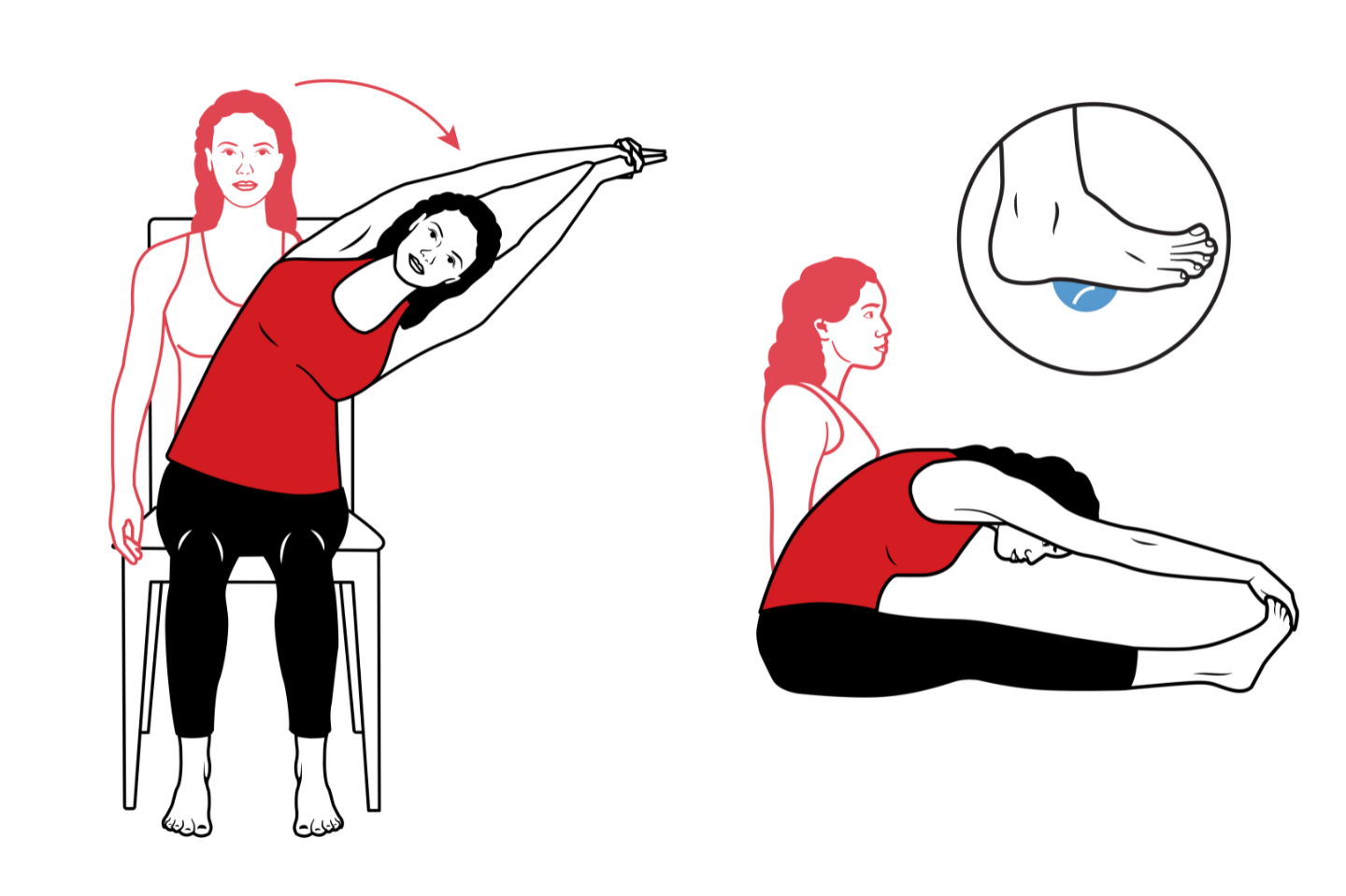
Ease tightness in your hips, lower back, and shoulders with this full-body stretching routine.
Sedentary lifestyles have become a major concern for healthcare professionals. Excessive sitting is linked to various health issues, comparable to the dangers of smoking.
While the risks may not be as severe as those from smoking, prolonged sitting can lead to heart problems and numerous orthopedic conditions.
In this article, discover quick and easy stretches and exercises to counteract the harmful effects of prolonged sitting.
Full-Boody Stretching Routine
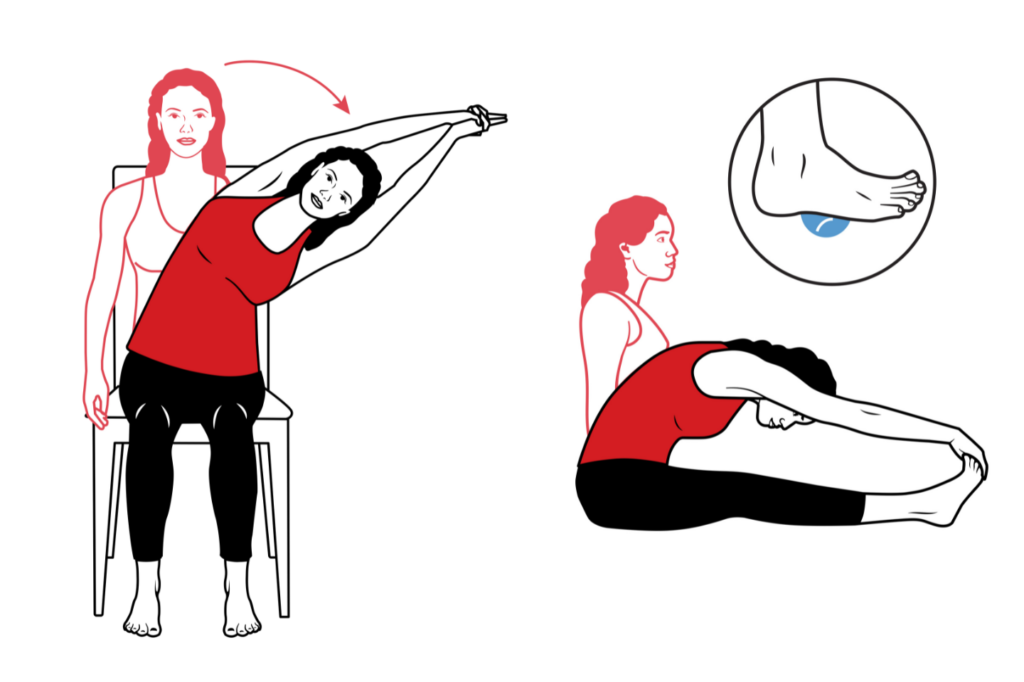
You’ll also like:
- How To Get A Deep Piriformis Stretch To Get Rid Of Sciatica Pain
- 10 Best Stretching Exercises To Make You as Flexible as a Cat in 4 Short Weeks
The Problem of Sitting
There’s no doubt that our early ancestors sat while they ate and during the rare times when they could relax. However, no humans, in the history of time, have ever sat for as many consecutive hours as we do now.
Worse yet, we’re usually staring at a screen while we sit, putting excess strain on our eyes.
In the end, literally, every single portion of our bodies is affected by our sitting habits.
For this reason, we will review some exercises and techniques for reducing strain on the parts of our bodies that are detrimentally affected by extended periods of sitting.
1. Eye Strain Relief
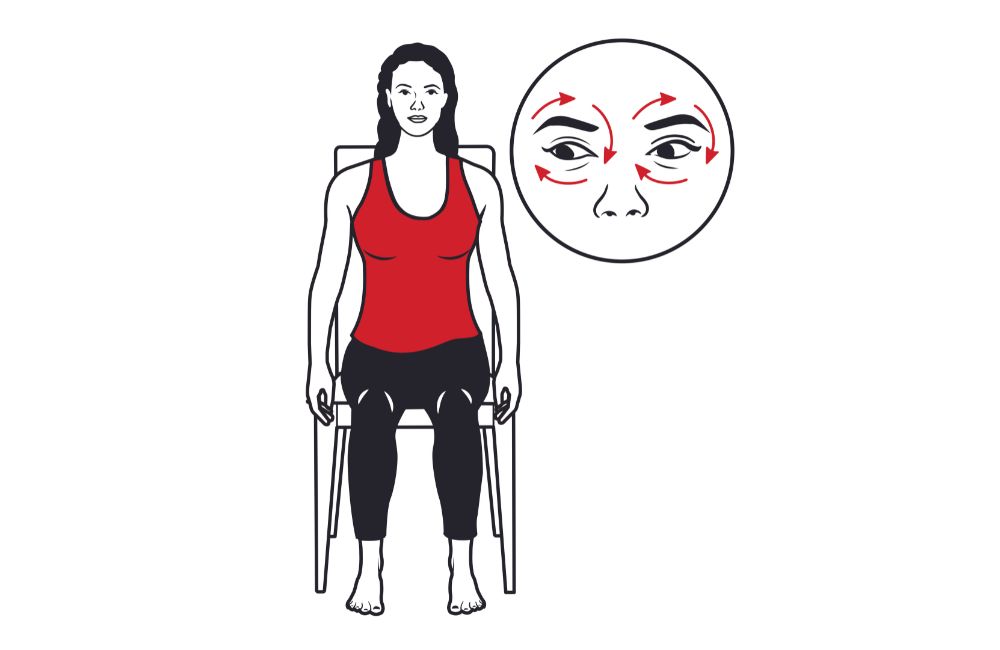
For those that experience eye strain caused by staring at a laptop all day long, the following exercise can help to decrease pain and provide relief of symptoms.
This exercise is known simply as “eye rolls”.
To properly perform eye rolls, you’ll want to sit up tall in your chair, keeping your spine straight. Next, you’ll move your eyes in a clockwise, circular pattern. Complete 10 clockwise circles, then reverse direction and complete 10 counterclockwise circles. This exercise should be performed once daily.
2. Neck Pain Relief
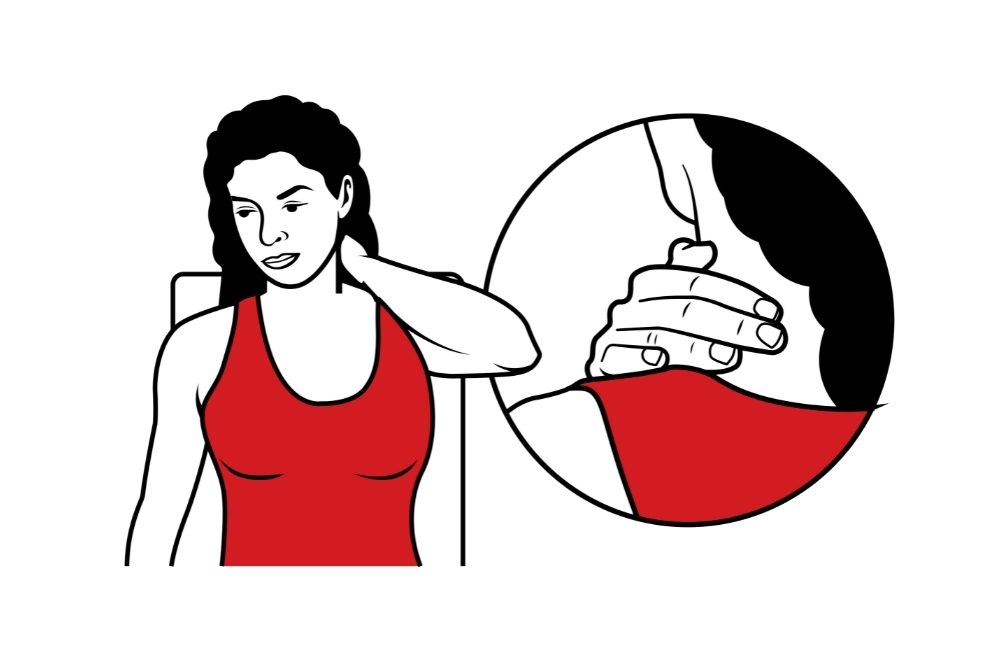
When sitting, many of us fall into what is known as a Forward Head Posture (FHP). FHP puts tons of strain on many muscles of the upper body, especially in the neck.
To combat some of the neck stiffness that stems from sitting for long periods, the neck-side bend stretch is the perfect solution.
In order to properly perform the neck side bend stretch, you should begin by sitting up tall, with your neck in line with your trunk.
Next, you’ll slowly tilt your head to the left, keeping your head from rotating too much in any direction.
This should cause a gentle stretch in the right side of your neck. Hold this stretch for 30 seconds, repeat 4 times on each side, one time per day.
3. Chest/Front Shoulder Relief
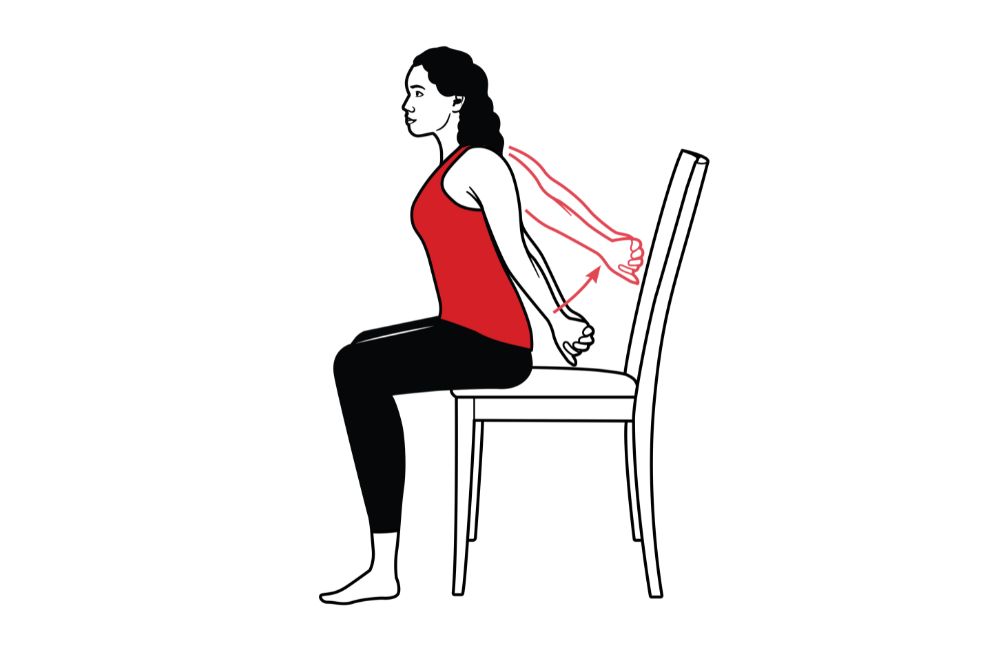
The seated pec stretch is well-loved by most office workers.
This stretch counteracts rounded shoulders and provides relief of restriction in the front of the shoulders and the chest.
To perform the seated pec stretch, you will start by sitting up tall. Next, reach your hands behind you and clasp your fingers together. At this point, you may be feeling an intense stretch in your pecs and shoulders.
However, if you aren’t feeling the stretch yet, you can elevate your arms toward the ceiling.
Once you’ve reached the point where you’re feeling a mild stretch, hold for 15 seconds, and repeat 10 times, once per day.
4. Upper Back Relief
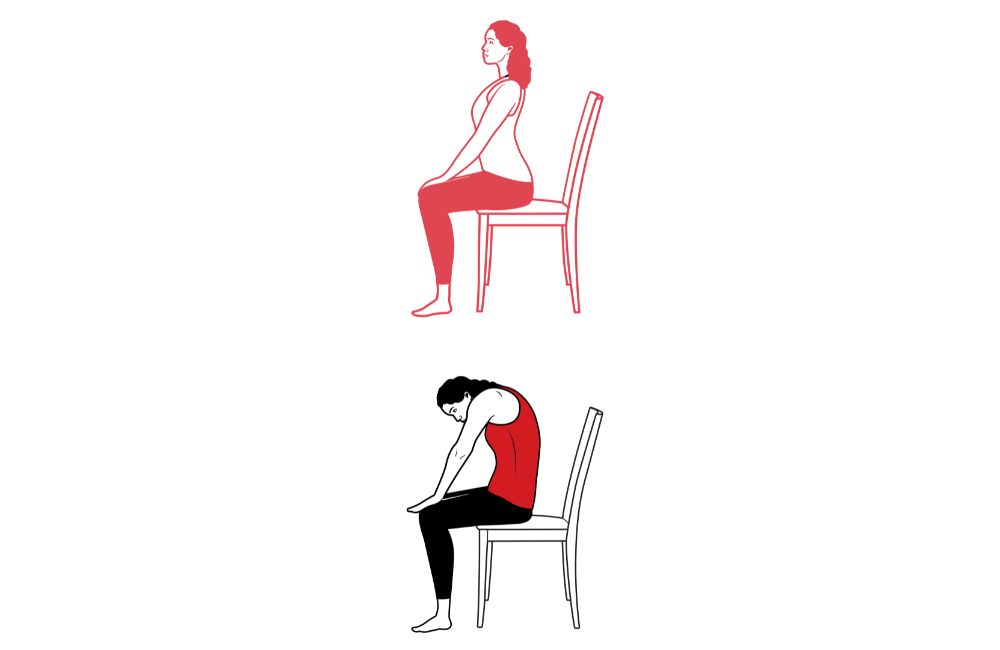
When you feel pain or tension in your upper back, it can be extremely distracting and debilitating.
For this reason, it’s a good idea to complete the seated cat-camel stretch everyday (or multiple times a day).
In order to properly perform the seated cat-camel stretch, you’ll need to first sit up tall, at the edge of your seat.
Then, you’ll place your hands on your thighs, and allow your upper back to bend forward as your chin tucks toward your chest.
Hold this position for 10 seconds, then reverse the motion, extending your upper back and straightening out your neck so that you are sitting up tall once again. Hold this position for 10 seconds.
You should aim to repeat this pattern 10 times per session, for one or more sessions a day.
5. Side of Back/Trunk Relief
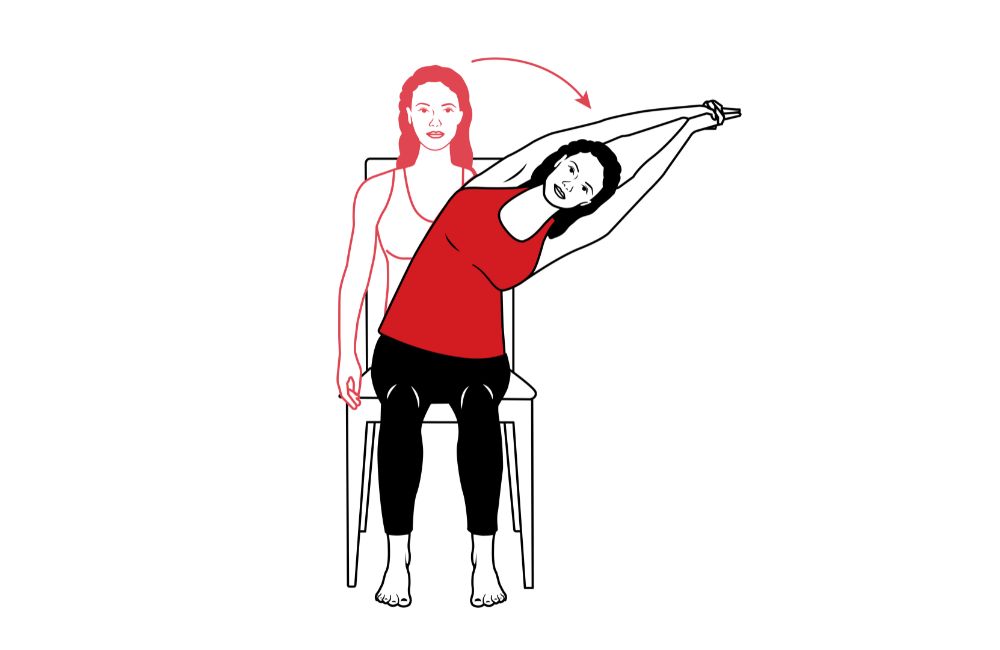
Thus far, I’ve reviewed stretches that emphasize the neck and upper back. However, areas that are often neglected and forgotten are the sides of the trunk.
Therefore, I’ll next review a stretch to loosen up this area.
To perform the trunk side bend stretch, you’ll want to move to the edge of your seat, with perfect posture. Next, lace your fingers together, reaching toward the ceiling.
Keeping your arms in line with your trunk, bend to the right side as far as you can comfortably. Once you’ve reached the point of mild stretch, hold for 10 seconds. Repeat this motion on the other side and complete 10 reps per side, one time per day.
6. Hamstring and Calf Relief
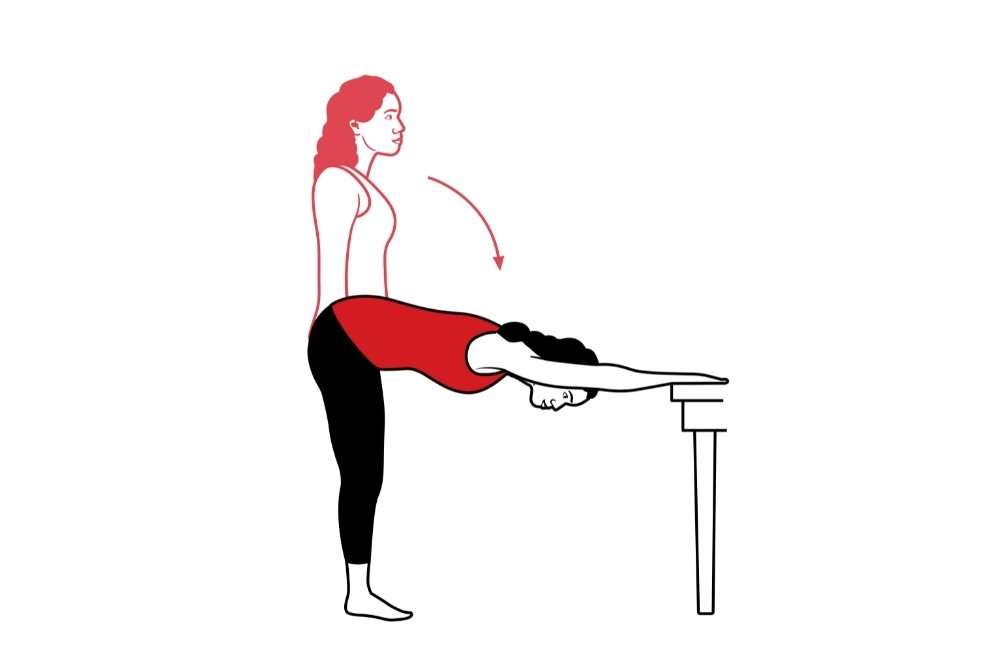
No matter who you are, tight hamstrings and calves can pose devastating problems. Therefore, it’s critical that everyone works on mobilizing this area every single day.
In order to stretch out this area (sometimes known as the posterior chain), you’ll want to stand up tall with your feet close together.
Then, slowly bend forward, attempting to touch your toes. Once you’ve reached the point of comfortable stretch, hold for 15 seconds, repeat 10 times per session, one session per day.
If you need extra support during this stretch or feel nervous about balancing in this way, you can also perform this exercise while sitting on the ground.
In order to do so, keep your legs straight and fold forward, attempting to touch your toes. Use the same parameters described above for how long to hold and how often to perform.
7. Relief for the Hips and Low Back
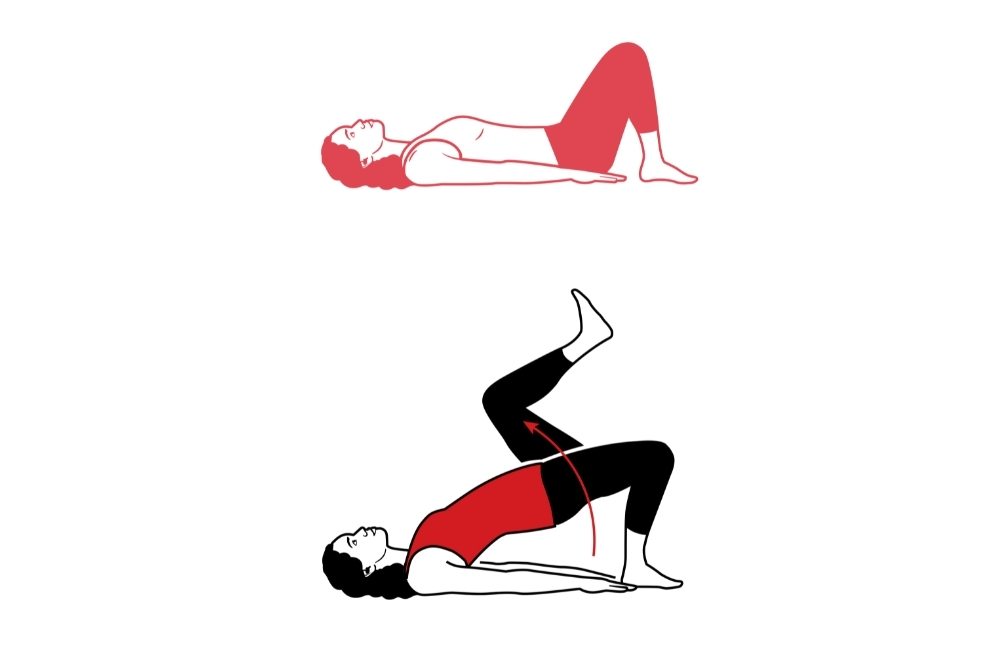
Up to this point, I’ve outlined many different stretches for most of the body. Next, I’ll review a strengthening exercise that can help to keep the back and hips more stable.
The exercise in question is known as a glute bridge.
The glute bridge is performed while lying flat on the ground. You’ll begin by lying with your knees bent, and feet flat on the floor.
Next, lift your hips off of the ground, squeezing your buttocks muscles to do so. Then slowly lower back down to the ground.
Repeat this motion for 10-12 repetitions, for 3 sets per session, once per day.
8. Relief for Tight Plantar Fascia
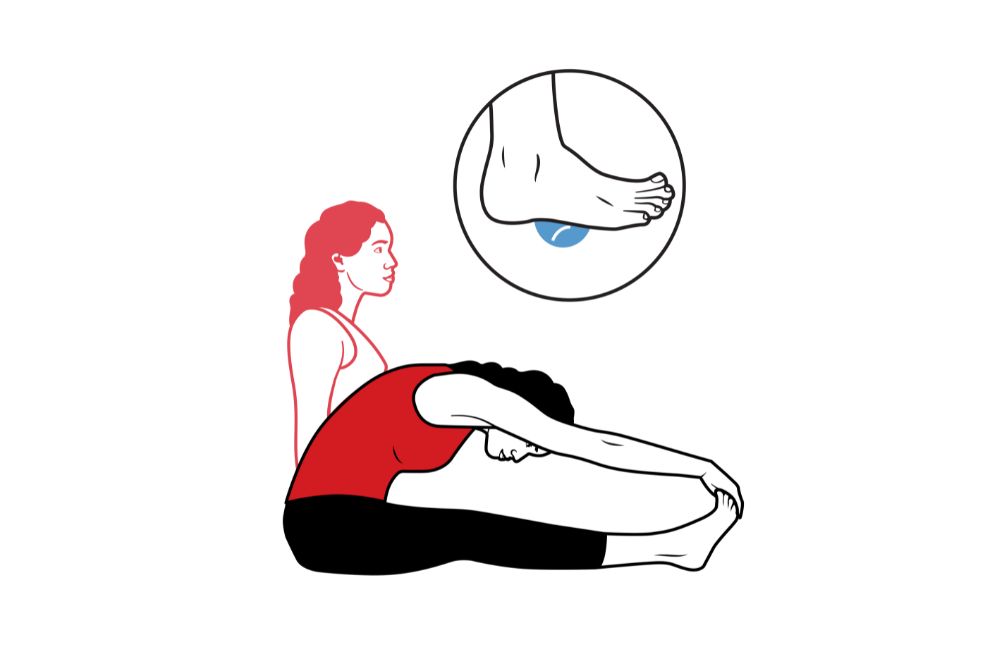
Beneath the feet lies the plantar fascia. The plantar fascia is a tissue made up of collagenous bands that provide support for our feet. In many people, the plantar fascia is overly tight.
In order to combat this tightness, one can use simple tools, such as a tennis ball.
Rolling out the plantar fascia with a tennis ball can be painful, but it’s well worth it for the long-term relief you’ll experience!
Start by standing, with one foot on top of the ball. Slowly, roll the ball forward, backward, and side to side. Continue in this manner for 30 seconds, then switch feet. As you become more comfortable with the movement, you can slowly begin to shift more weight onto the foot that is placed on the ball.
Complete this exercise once per day, every day.
Full-Body Stretching Routine
In just a few minutes a day, and with minimal equipment, you can loosen up your entire body!
Sitting can cause tons of issues throughout the body, but you can counteract these issues by performing the movements outlined in this article. Give this routine a try for a few weeks and see how you feel!
Works Cited
- Owen, N., Healy, G. N., Matthews, C. E., & Dunstan, D. W. (2010). Too much sitting: the population health science of sedentary behavior. Exercise and sport sciences reviews, 38(3), 105–113. https://doi.org/10.1097/JES.0b013e3181e373a2
- Park, J. H., Moon, J. H., Kim, H. J., Kong, M. H., & Oh, Y. H. (2020). Sedentary Lifestyle: Overview of Updated Evidence of Potential Health Risks. Korean journal of family medicine, 41(6), 365–373. https://doi.org/10.4082/kjfm.20.0165


